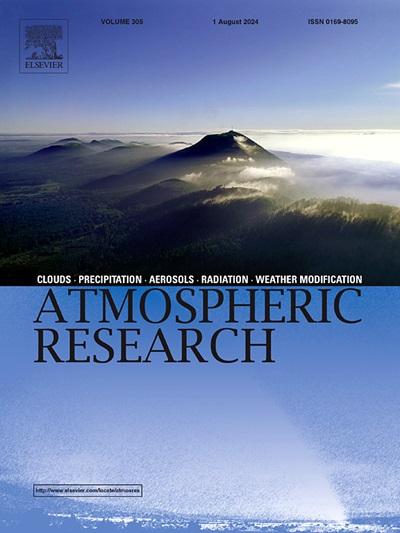Study on the contribution of the major desert groups on SDS weather in East Asia combining the model simulation and multiple observations
IF 4.5
2区 地球科学
Q1 METEOROLOGY & ATMOSPHERIC SCIENCES
引用次数: 0
Abstract
Sand and Dust Storm (SDS) is an important disastrous weather, and spring 2023 marked the highest frequency of SDSs in the past decade in East Asia. Combining model prediction and multi-source observations, based on the generally good ability of the CMA_Meso/CUACE_SDS model to reproduce the dust emission, transportation paths, development stages, PM10 concentration, and dust vertical distribution, five typical SDS events were selected to study the relative contributions of the major three deserts: Mongolia, Inner Mongolia, and Xinjiang deserts to the desert sources, near and far downwind areas including Mongolia, China, Korean Peninsula, and Japan.
From the perspective of the total accumulated dust emission of the five SDSs in the three primary desert source regions, the Xinjiang desert had the highest emissions of 153.6 Tg, followed by the Mongolian deserts of 81.3 Tg, and the lowest emissions in the Inner Mongolian deserts of 41.4 Tg. However, the contributions of the three deserts to the surface dust concentration were not entirely consistent with their accumulated dust emissions. The sensitive experiments showed Mongolia desert contributes 40.5 %, 34.6 %, 47.0 %, 49.5 %, and 48.4 % of the surface dust concentration in Inner Mongolia deserts, Central China, Beijing-Tianjin-Hebei in China, Northeast China, and Yangtze River Delta regions, indicating the first contribution to its near downwind regions in China by cross-boundary transportation; Xinjiang desert is second contributor, with corresponding contribution of 19.0 %, 27.7 %, 31.9 %, 35.3 %, and 42.6 % for the same regions; while the contribution of Inner Mongolia desert to the dust in downwind area was the smallest, contributing less than 25 % to most regions except for its neighboring Central China (37.7 %). The dust concentrations of far downwind regions of the Korean Peninsula and Japan were more influenced by the Xinjiang deserts, which contributed 47.0 % and 51.4 % to these two regions, Mongolia deserts contributed 35.1 % and 34.4 %. In general, the study results showed the significant influence of Mongolia's deserts on the SDS in East Asia in spring 2023.
结合模式模拟和多种观测数据研究东亚主要沙漠群对 SDS 天气的影响
本文章由计算机程序翻译,如有差异,请以英文原文为准。
求助全文
约1分钟内获得全文
求助全文
来源期刊

Atmospheric Research
地学-气象与大气科学
CiteScore
9.40
自引率
10.90%
发文量
460
审稿时长
47 days
期刊介绍:
The journal publishes scientific papers (research papers, review articles, letters and notes) dealing with the part of the atmosphere where meteorological events occur. Attention is given to all processes extending from the earth surface to the tropopause, but special emphasis continues to be devoted to the physics of clouds, mesoscale meteorology and air pollution, i.e. atmospheric aerosols; microphysical processes; cloud dynamics and thermodynamics; numerical simulation, climatology, climate change and weather modification.
 求助内容:
求助内容: 应助结果提醒方式:
应助结果提醒方式:


